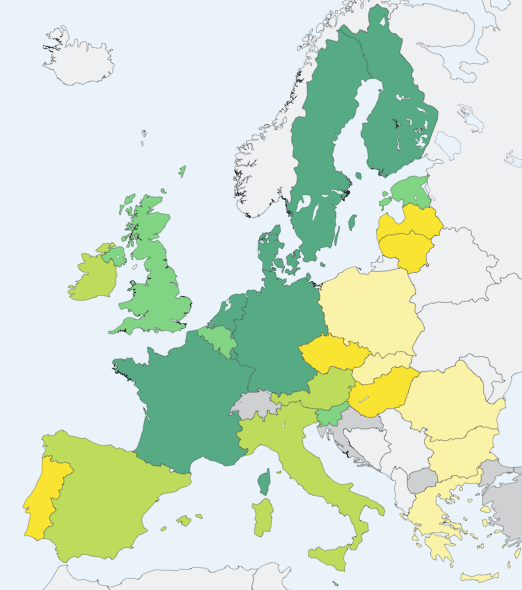I love hearing about the latest digital tools that help one operate as a journalist/researcher whether that be twitter search and monitoring tools, bookmark management tools, people search tools etc. “Search : theory and practice in journalism online” by Dick is particularly good for finding and describing this stuff – but I am not aware of any articles that bring the different pieces together to describe all the key online tools a journalist uses and how they all go together into a work flow. I plan to come up with something myself to share with students and if I do I will post it here but I would love to hear what other people are using.
Archive for the 'teaching' Category | back to home
Habermas’ public sphere is vital for journalism undergrad students to understand (if only to critique) but in looking around for source texts I am disappointed to find not only is H himself rather hard to follow (obviously when translated into English) but the works I have been given in the past to summarise and discuss him (Calhoun 1992; Habermas 1974; Peters 1993) are themselves (in my view) rather too sophisticated to give to undergraduates.
A few months ago there was a discussion on the Association of Internet Researchers email list about good texts which mentioned quite a few – if you are interested you might want to go fish in those suggestions but my skim of some of the discussion led me to think they were also too sophisticated for my students.
Here are a few suggestions of mine:
There’s a good intro to the concept with references in (Franklin, 2005) but it’s only 550 words long.
It led me on to (Manning, 2001) which has a very good first chapter touching on the public sphere and critiques of it – the only problem with this is that it’s not designed as a ‘stand-alone’ argument – it’s in the middle of a longer text. Also, it isn’t freely available online. Which led me on to a source that you may not know (Thornton, 2001). As a Masters student she put her thesis “Does the Internet Create Democracy?” up online in a sophisticated easy to navigate form and she was later published in Ecquid Novi and put the text of that up online too. It is a clear, well-referenced discussion of the public sphere with some clearly-written critiques and good early discussion of the limitations and potentials of using the internet as a means to revitalise the public sphere. Alas, she did not continue along an academic career path and she died young in 2010. I hope this post encourages other scholars to use her work to teach with.
I am still ‘in the market’ for other suggestions of good intro-level texts about journalism, the public sphere, and critiques of Habermas’ ideas, so please comment if you have ideas – preferably texts that are open access…
Bibliography
Calhoun, C. (1992). Introduction. In C. Calhoun (Ed.), Habermas and the public sphere (pp. 1-48). Cambridge, Mass: MIT Press
Franklin, B., Hamer, M., & Hanna, M. (2005). Key concepts in journalism. London: SAGE.
Habermas, J. (1974). The public sphere: an encyclopaedia article. New German Critique, 1(3), pp. 49-55.
Manning, P. (2001). News and news sources : a critical introduction. London: Sage.
Peters, J. D. (1993). Distrust of Representation: Habermas on the Public Sphere. Media, Culture & Society, 15(4), 541 – 572.
Thornton, A. L. (2001). Does the internet create democracy? Ecquid Novi: African Journalism Studies, 22(2), 126-147. Retrieved from http://www.zipworld.com.au/~athornto/
It is certain that not enough children are reading books if by that you mean that children aren’t reading as many books as adults and particularly their parents would like but a BBC report of a new National Literacy Trust survey rather exaggerates and distorts the evidence.
The main problem is that it is a survey of 8-17 year olds but the statistics quoted aren’t broken down by age. Naturally eight year olds (who may not even know how to read adequately) are going to be significantly behind and will make the figures look worse. Also, the headline for the story given on the BBC News front page is “Pupils ‘prefer emails to books'” – a quotation that appears nowhere in the report. In the news piece and executive summary of the report it says “text messages, magazines, emails and websites were the top leisure reading choices of young people” which implies that’s what they like to read most but in fact the survey just shows that it’s what they read most often.
Lastly, I noted that the journalist said, “more girls admit they read text messages, magazines, emails, fiction, song lyrics and social networking message boards and poems than boys” – why “admit”?!
This article, “What is the Good of the ‘Examined Life’? Some Thoughts on the Apology and Liberal Education” is to my mind the essence of an academic article. It’s thought-provoking, on an important subject (perhaps, the author argues, the most important – the need for each of us not just to live ethically but to reflect on what it means to live ethically), it’s written clearly and concisely and it’s open access so anyone can read it. I wish there were some way to make it a required reading for what I teach…
Thanks to the ever excellent Book Forum blog for bringing it to my attention.
I wouldn’t have expected the EU to have anything as sexy as a map-based visualisation tool but Eurostat‘s is not bad at all and lets me generate all kinds of infographics (like the one below) for teaching use.

Percentages of households with broadband in Europe 2009
